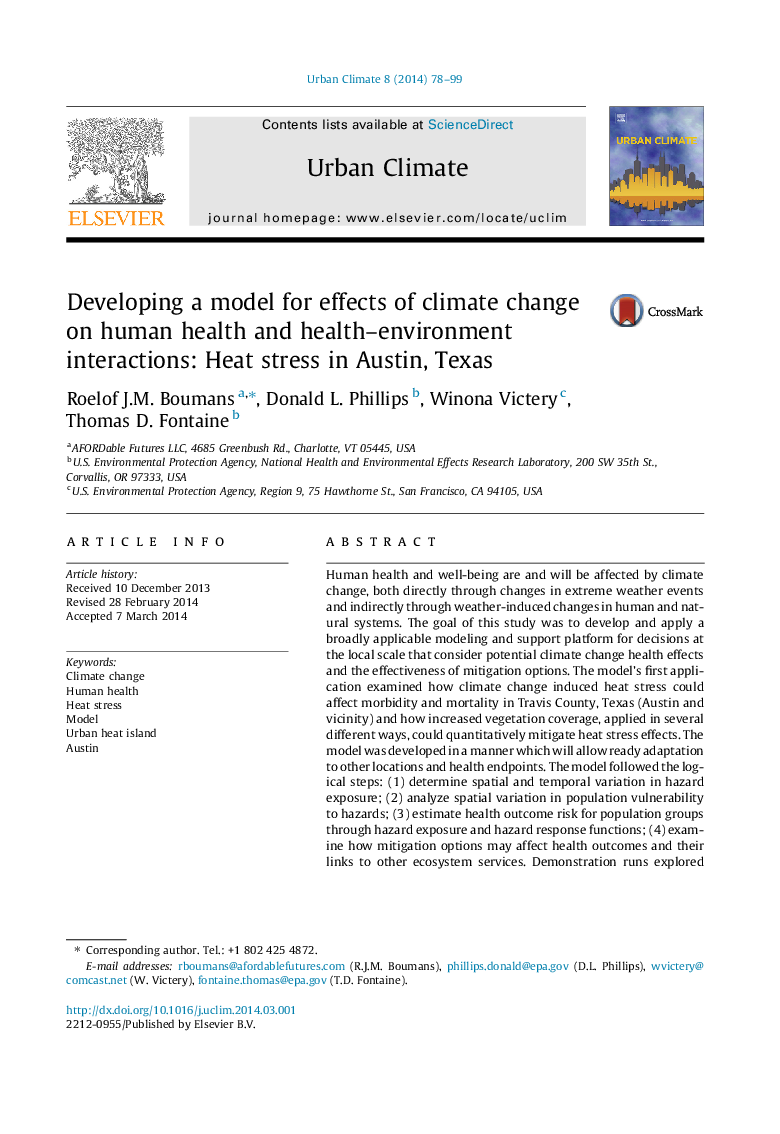| Article ID | Journal | Published Year | Pages | File Type |
|---|---|---|---|---|
| 143736 | Urban Climate | 2014 | 22 Pages |
•We developed a model to examine potential effects of climate change on human health endpoints.•The prototype model addressed heat stress morbidity and mortality in Austin, Texas.•Outcomes varied spatially by urban heat island effects and population vulnerability.•Increased urban forest cover could provide some heat mitigation if sufficient water is available.
Human health and well-being are and will be affected by climate change, both directly through changes in extreme weather events and indirectly through weather-induced changes in human and natural systems. The goal of this study was to develop and apply a broadly applicable modeling and support platform for decisions at the local scale that consider potential climate change health effects and the effectiveness of mitigation options. The model’s first application examined how climate change induced heat stress could affect morbidity and mortality in Travis County, Texas (Austin and vicinity) and how increased vegetation coverage, applied in several different ways, could quantitatively mitigate heat stress effects. The model was developed in a manner which will allow ready adaptation to other locations and health endpoints. The model followed the logical steps: (1) determine spatial and temporal variation in hazard exposure; (2) analyze spatial variation in population vulnerability to hazards; (3) estimate health outcome risk for population groups through hazard exposure and hazard response functions; (4) examine how mitigation options may affect health outcomes and their links to other ecosystem services. Demonstration runs explored spatial and temporal variation in health effect responses and effects of potential urban forestry mitigation options.
